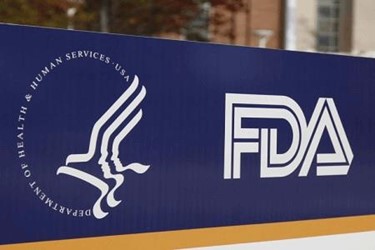Can Regulation (Really) Encourage Innovation? The FDA, Continuous Manufacturing, & Patient Safety
A conversation with Katlin McKelvie Backfield, former FDA counsel; Dennis Hester, Mirati Therapeutics; Ben Littler, Vertex Pharmaceuticals; and Ajay Madan, Crinetics Pharmaceuticals

As part of its mission to protect and promote the public health, the U.S. Food and Drug Administration (FDA) has two primary goals when it comes to the regulation of (bio)pharmaceuticals: (1) assuring the safety, effectiveness, and quality of these products, and (2) fostering innovation and modernization, which can help make these products safer, more effective, and more affordable for patients. There is often tension between the two goals, yet the agency aims to be mindful of both — a fact that can be difficult and frustrating for those who are developing and manufacturing drugs and biologics.
Pharmaceutical innovation can come in many forms: manufacturing innovation, drug substance innovation, drug product innovation, drug delivery innovation, and many others. Regardless of its form, any new development related to products bound for the U.S. market must pass muster with the FDA. As such, the agency has great influence over the pace of biopharma innovation and its eventual adoption. Is it possible for the FDA to truly foster innovation, while simultaneously serving as the protector of public health?
To answer this and other questions about the role of the regulator in innovation, Outsourced Pharma reached out to four industry experts:
- Katlin McKelvie Backfield, attorney at law and consultant (former FDA counsel), Backfield PLLC
- Dennis Hester, VP of Product Development and head of CMC, Mirati Therapeutics
- Ben Littler, senior director of process chemistry, Vertex Pharmaceuticals
- Ajay Madan, VP of development, Crinetics Pharmaceuticals
In this two-part Q&A, our diverse group of industry veterans shares its perspectives, experiences, and best practices related to the regulatory dynamics for innovation. In this installment, they discuss ways in which the FDA encourages innovation, what role the agency’s Emerging Technology Team (ETT) plays in supporting manufacturing innovation, and whether the regulator’s innovation-safety balance is (or should be) the same for rare or orphan disease treatments as it is for blockbuster drugs.
In what ways does the FDA actually encourage pharmaceutical innovation?
 Katlin McKelvie Backfield, Backfield PLLC: I left the FDA last year, after serving nine years in the chief counsel’s office and two years at the Center for Drug Evaluation and Research (CDER).
Katlin McKelvie Backfield, Backfield PLLC: I left the FDA last year, after serving nine years in the chief counsel’s office and two years at the Center for Drug Evaluation and Research (CDER).
In the process of evaluating whether to approve a drug, for example, the FDA conducts a risk-benefit analysis. That analysis can take into account things like the seriousness of the condition, availability of other therapies, etc. However, they don’t necessarily do the same type of risk-benefit analysis when evaluating whether a drug is compliant with good manufacturing practices (GMPs). A drug has to meet the GMP requirements — there’s no risk-benefit assessment there.
That’s not to say the FDA’s stance on GMPs hasn’t changed over time, or that the FDA hasn’t encouraged innovative approaches to meeting GMPs. I saw a real emphasis on encouraging innovation in manufacturing during my time there, especially with Janet Woodcock at the helm of CDER. The agency has demonstrated a real desire to work with industry to foster innovative manufacturing technologies, like continuous manufacturing. I also witnessed the development of the Emerging Technology Team (ETT) within CDER, whose mission is to help companies implement innovative manufacturing techniques in a way that meets FDA quality requirements.
Even the quality metrics initiative, which I know industry folks have expressed some concerns with, is a way in which the agency is trying to encourage innovation on the part of manufacturers.
 Ben Littler, Vertex Pharmaceuticals: Our Orkambi cystic fibrosis (CF) treatment was the first drug launched in the U.S. using continuous drug product manufacturing, and the FDA was a very willing partner in making that happen. There were a lot of questions, both from our side and from the FDA and other global regulators, as to how to launch a new drug with continuous. What are the risks? How do you adapt your filing strategy? How do you determine what is required for GMP compliance?
Ben Littler, Vertex Pharmaceuticals: Our Orkambi cystic fibrosis (CF) treatment was the first drug launched in the U.S. using continuous drug product manufacturing, and the FDA was a very willing partner in making that happen. There were a lot of questions, both from our side and from the FDA and other global regulators, as to how to launch a new drug with continuous. What are the risks? How do you adapt your filing strategy? How do you determine what is required for GMP compliance?
In many ways, one of the biggest challenges was that we were generating and sharing much more data about what was going on in our manufacturing process than you would have for a traditional batch process. As the innovator company, there were concerns about what the FDA would do with all that data. What if they saw minor excursions? How will they handle them?
However, the agency actually has been very supportive in helping Vertex realize our vision up to this point. In my experience, a number of FDA employees have a chemical engineering background, often in the petrochemical industry, where this kind of process data has been available for decades. They are interested in working with pharma to promote data-rich experiments and they appear to be willing to discuss how this might allow both pharma and regulators to rethink and streamline how they validate processes and facilitate on-going process improvements, for example.
 Dennis Hester, Mirati Therapeutics: My expertise is in drug development and delivery, and I’ve been involved with several innovative products. For example, I worked on inhalable insulin, which was successful in some aspects (but not in others), and then more recently on weekly dosing for Type 2 diabetes.
Dennis Hester, Mirati Therapeutics: My expertise is in drug development and delivery, and I’ve been involved with several innovative products. For example, I worked on inhalable insulin, which was successful in some aspects (but not in others), and then more recently on weekly dosing for Type 2 diabetes.
In the case of inhalable insulin, it was a combination product with a delivery device as well as the drug. During the development processes, we had a lot of interaction with the FDA, because with an innovative product, the safety issues really aren’t known until you are into the clinic. You discover things as you move along, with the aid of the FDA, that define your product and ensure safety is built in, so you’re not doing any harm to patients.
 Ajay Madan, Crinetics Pharmaceuticals: When developing a novel product, as we are, the burden is on the innovator company to get the FDA on the same page. The agency does not have the resources to send people in and respond in a short period of time. The faster we can get them up to speed with our knowledge base, the faster they can actually start to align themselves with our thinking.
Ajay Madan, Crinetics Pharmaceuticals: When developing a novel product, as we are, the burden is on the innovator company to get the FDA on the same page. The agency does not have the resources to send people in and respond in a short period of time. The faster we can get them up to speed with our knowledge base, the faster they can actually start to align themselves with our thinking.
In what ways is the FDA’s Emerging Technology Team (ETT) helping the agency strike that balance between innovation and safety?
Littler: We have worked extensively with the ETT on the drug product side. I think they are a very good bridge between the sponsor company and the FDA reviewers — a really good way to get a discussion started. After speaking with colleagues from other organizations that have worked with the ETT for continuous manufacturing, I would strongly recommend engaging the ETT early in the development process.
The ETT appears to be focused on truly emerging technologies; they’re less interested in me-toos. For example, I have heard that some companies using continuous manufacturing technologies have gone to the ETT and said, “We have something that’s a bit different from what you might have seen before.” And the ETT responded, “Continuous is now an established technology, so you just need to follow what was done in this other case.” However, they certainly can provide advice and are very much open to talking. They would rather speak with you too soon — and tell you to come back in six months — than have you come to them six months too late, when they could have helped you move something forward more effectively.
Hester: That’s been my experience as well. The FDA has been very willing to work with sponsors as early as you can. They are willing to provide any type of feedback to help you progress your program.
Is that innovation-safety balance the same for rare or orphan disease treatments as it is for blockbuster drugs?
Backfield: Yes, I think so. This issue came up at FDA when I was there, in a number of different contexts. It’s hard to say that the size of the population will affect the risk-benefit calculation. I don’t think anyone feels comfortable saying that there’s less of a risk when only a few people are taking the drug, compared to a million-people taking the drug. Even if the drug is for a very serious condition and there are no other treatment options available, the FDA still has to take into account the risks associated with that product in terms of GMP compliance.
Hester: I think your risk should be really an N of 1. Is that one patient going to inaccurately prepare a dose or inaccurately administer a dose or take multiple repeat doses outside of the normal regimen?
When I was with Amylin, we had a global patient population of something like 17 patients (severe lipodystrophy). Those patients were very well-tracked and treated and monitored, but the safety issues still occurred — even for that small population. If you look at the smaller population and apply it to the larger one, I think you’re in a much better position.
Littler: Working in cystic fibrosis, Vertex was able to start with a clearly defined and relatively narrow patient population and then expand. By necessity, this led to fairly small initial clinical studies, so we needed to characterize and understand the safety profile very well, because as you move to a wider patient population, you increase the risk of seeing idiosyncratic events come along.
Hester: CF is such a heterogeneous population, too — there are over 200 forms of it, right? If you apply a safety perspective for a single subset of that heterogenous population, it may not be applicable to the broader population and all of the variants.
Madan: When we sit in board rooms telling our investors about the merits of pursuing a program, cost is an integral part of that equation. If the safety hurdle for a very small population is great, often the decision is made not to pursue that program, before we even have traction on the biological target. Is there really a sliding scale, or are we talking about two different things — commercial product versus a product in development?
Hester: I agree. With a product in development, the safety profile is really unknown. You do want to get in the clinic as quickly as possible and start building that database, to assess if you have a narrow therapeutic index or such a small dose that is hard to accurately deliver, for example. You need the clinical data to be able to assess that. Once you start gaining that data in Phase 1, you can assess if you can move forward or not. Phase 1 is where many products end up dying.
Backfield: FDA has issued a guidance document on the GMP requirements for Phase 1 studies, which are slightly different than for later-phase studies.
Hester: From a drug development perspective, I’ve always tried to adhere to the GMPs as much as possible, given the new guidance for Phase 1 manufacture — even for raw materials going into an active pharmaceutical ingredient (API). You really never know where you will need to set that barrier, what your regulatory starting materials might be, and how the GMPs apply moving forward. Although you can relax the GMP requirements for Phase 1, I think a lot of my colleagues tend to build in as much GMP as early as possible, to ensure the success of a program later on.
In Part 2, the experts turn their attention to: safety considerations when working with compounding pharmacies, the feasibility of just-in-time drug manufacturing, and recommendations for speeding materials release.
